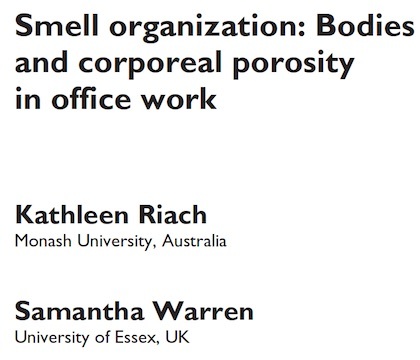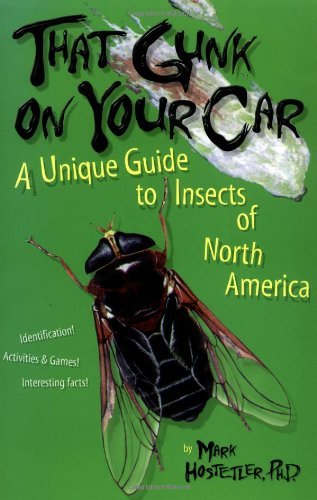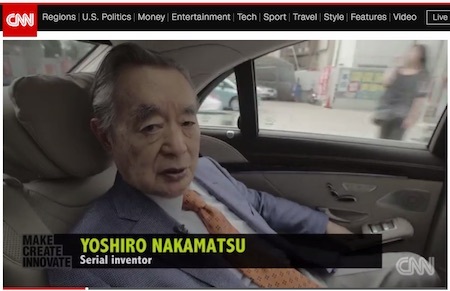Marc Abrahams's Blog, page 254
August 25, 2016
The (carbon) footprints of criminals (new study)
A news release from the University of Surrey, UK, draws attention to the first study to have systematically assessed the carbon footprint of UK crimes. The research team found that :-
“[…] crime committed in 2011 in England and Wales gave rise to over 4 million tonnes of carbon dioxide equivalents. Burglary resulted in the largest proportion of the total footprint (30%), because of the carbon associated with replacing stolen/damaged goods. Emissions arising from criminal justice system services also accounted for a large proportion (21% of all offenses; 49% of police recorded offenses).”
However, the urgent requirement to mitigate the UK’s carbon footprint – simply by reducing crime levels – is not necessarily a straightforward option :
“As an example, we consider the impact of reducing domestic burglary by 5%. Calculating this is inherently uncertain given that it depends on assumptions concerning how money would be spent in the absence of crime. We find the most likely rebound effect (our medium estimate) is an increase in emissions of 2%.” [our emphasis].
See: ‘Addressing the Carbon-Crime Blind Spot: A Carbon Footprint Approach’ in the Journal of Industrial Ecology, early view, June 2016.

August 24, 2016
Smelly people in the office [podcast #78]
Smelly people in the smelly workplace — that’s the dilemma and joy of this week’s Improbable Research podcast.
SUBSCRIBE on Play.it, iTunes, or Spotify to get a new episode every week, free.
This week, Marc Abrahams — with dramatic readings by FYFD fluid dynamicist Nicole Sharp — tells about:
Hugging and what it means, maybe — “Smell Organization: Bodies and Corporeal Porosity in Office Work,” Kathleen Riach [pictured here] and Samantha Warren, Human Relations, May 2015 vol. 68 no. 5 pp. 789-809.
Porosity .
The mysterious John Schedler or the shadowy Bruce Petschek perhaps did the sound engineering this week.
The Improbable Research podcast is all about research that makes people LAUGH, then THINK — real research, about anything and everything, from everywhere —research that may be good or bad, important or trivial, valuable or worthless. CBS distributes it, on the CBS Play.it web site, and on iTunes and Spotify).

August 23, 2016
Ig Nobel Prize-winning Bug-splat book author, on the Tonight Show
In 1997, right after Mark Hostetler won his Ig Nobel Prize, NBC’s The Tonight Show invited him to be on their program. Here’s edited video of that:
The 1997 Ig Nobel Prize for entomology was awarded to Mark Hostetler of the University of Florida, for his scholarly book, “That Gunk on Your Car,” which identifies the insect splats that appear on automobile windows. [The book is published by Ten Speed Press.]

Ragnhild Bjørknes joins The Luxuriant Flowing, Former, or Facial Hair Club for Social Scientists (LFFFHCfSS)
Ragnhild Bjørknes has joined The Luxuriant Flowing, Former, or Facial Hair Club for Social Scientists (LFFFHCfSS). Ida Marie Bjørknes, who nominated her, says:
She is an associate professor at the Faculty of Psychology at the University of Bergen in Norway, and more importantly – she has great hair! I am her sister and I instantly thought that she belongs in this luxurious club when I first heard about it at the Ig Nobel Prize show at the University of Oslo, where I work.
Sadly, I cannot nominate myself since I am not a researcher, and also because of my bleached and broken hair. My sister on the other hand has long, flowing, natural chocolate brown, beautiful hair, as you can see in the picture.
Ragnhild Bjørknes, Ph.D, LFFFHCfSS
Professor, Faculty of Psychology
University of Bergen
Bergen, Norway


Six familiar (to many people) paradoxes
Six paradoxes, each presented in one minute, animated by philosophers and their friends at The Open University:
(Thanks to investigator Vern Illy for bringing this to our attention.)

August 22, 2016
One month from today: The 2016 Ig Nobel Prize ceremony
The 26th First Annual Ig Nobel Prize Ceremony happens exactly one month from today.
THE CEREMONY: The ceremony will happen at the usual place. This year’s theme: TIME.
WHERE: Sanders Theatre, Harvard University
WHEN: THURSDAY, SEPTEMBER 22, 2016, 6:00 pm.
Ceremony details: <http://www.improbable.com/ig/2016>
TICKETS: A few tickets are still available. The Harvard Box Office handles all ticket sales. The physical ticket office [now in a temporary location in Farkas Hall, 10 Holyoke Street, Cambridge] is open some (but not all!) days from noon to 6 pm. The web site is open 24 hours, every day.
Box Office web site: https://www.boxoffice.harvard.edu, Telephone (+1) 617-496-2222.
WEBCAST: The ceremony will, as usual, be webcast live. (Historical note: The 1995 Ig Nobel Prize ceremony was one of the very first events of any kind to be broadcast on the Internet!)

Another new, inventive documentary about Dr. Nakamats
There is yet another new documentary about Dr. Nakamats, the man who has more than 3500 patents and who was awarded an Ig Nobel Prize (in 1995, for having photographed every meal he had consumed for the previous 34 years), and who is still alive despite the predictions of his doctors.
CNN’s Make, Create, Innovate program has just broadcast a two-part report called “The most inventive man in the world”. You can watch it online: Part 1, Part 2.

Tallying Satan: The Count Reaches 134 (or 129.2)
Can one ever count on Satan and be sure that the count is accurate? A new tally has just been announced. Details are in this study:
 “Diabolical Data: A Critical Inventory of New Testament Satanology,” Thomas J. Farrar [pictured here] and Guy J. Williams, Journal for the Study of the New Testament, vol. 39, no. 1, September 2016, pp. 40-71. The authors, based at Cape Peninsula University of Technology, South Africa, King’s Evangelical Divinity School, UK, and Wellington College, UK, explain:
“Diabolical Data: A Critical Inventory of New Testament Satanology,” Thomas J. Farrar [pictured here] and Guy J. Williams, Journal for the Study of the New Testament, vol. 39, no. 1, September 2016, pp. 40-71. The authors, based at Cape Peninsula University of Technology, South Africa, King’s Evangelical Divinity School, UK, and Wellington College, UK, explain:
“This study counts references to Satan in the NT, by any designation. First, all candidate texts are surveyed. These include occurrences of the words σατανᾶς and διάβολος (with and without the article) and 30 other terms which potentially refer to Satan, descriptively or allegorically. Having laid ground rules for counting potential references in close proximity, candidate texts in which the referent is uncertain are analysed exegetically to decide whether they do refer to Satan. These include texts in which σατανᾶς or διάβολος occurs without the article and texts in which neither σατανᾶς nor διάβολος occurs. Through exegesis, a final count of 137 references to Satan in the NT is obtained. An alternative, probability-weighted approach estimates the number at 129.2. In either case, the total is strikingly greater than a simple summation of instances of σατανᾶς and διάβολος.”
(Thanks to Dan Vergano for bringing this to our attention.)

Van Der Waals bra (new patent)
“[…] brassieres (primarily strapless brassieres and but also those with straps), dresses, swimsuits, socks, tops and other articles of clothing (or the like) have a tendency to fall down or off […]”
– explains a new (Aug 2016) US patent. The novel methodology for holding them up makes use of intermolecular electrostatic attractive forces known as Van Der Waals forces, which are provided by specially constructed silicone patches with microscopic hair-like structures known as setae (analogous to those found on geckos’ feet).
The invention is assigned to Kellie K apparel LLC, and is currently marketed as GeckTeck™ See: US patent 9,402,424, ‘Brassiere’ awarded to inventor Dr. Anthony Roy of Los Angeles, California. Here he is, along with colleague Dr. Jessica Pfeilsticker who explains the technological aspects of the invention.
Also see: The 2009 Ig Nobel Public Health Prize: Awarded to Dr. Elena N. Bodnar, Raphael C. Lee, and Sandra Marijan of Chicago, Illinois, USA, for inventing a brassiere that, in an emergency, can be quickly converted into a pair of protective face masks, one for the brassiere wearer and one to be given to some needy bystander.

August 21, 2016
Socialites in chemistry
Do socialites have a place in chemistry? Yes:
“Synthesis and characterization of two new silica socialites containing ethanolamine or ethylenediamine as guest species,” Carola M. Braunbarth, Peter Behrens, Jürgen Felsche, Gianpietro van de Goor, Gerhard Wildermuth, and Günter Engelhardt, Zeolites, 16, no. 2 (1996): 207-217.
BONUS: Braunbarth’s patent application (US 2006/0034975 A1) for coated chewing gum.

Marc Abrahams's Blog
- Marc Abrahams's profile
- 14 followers









